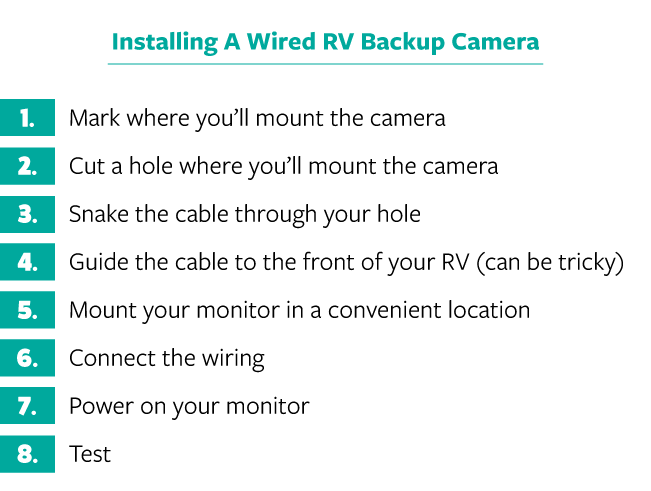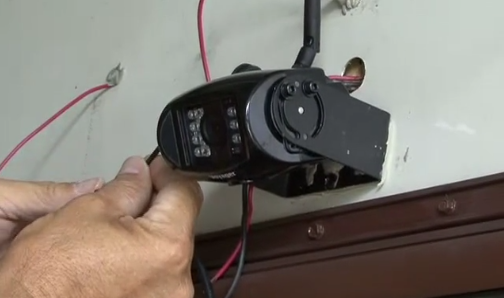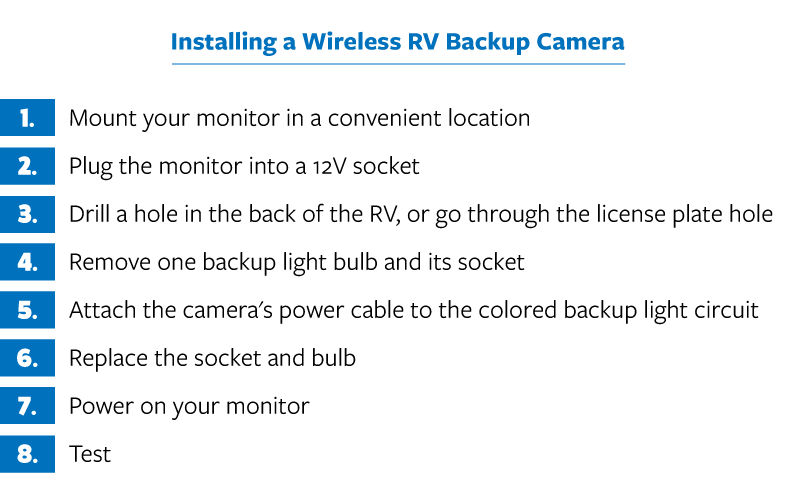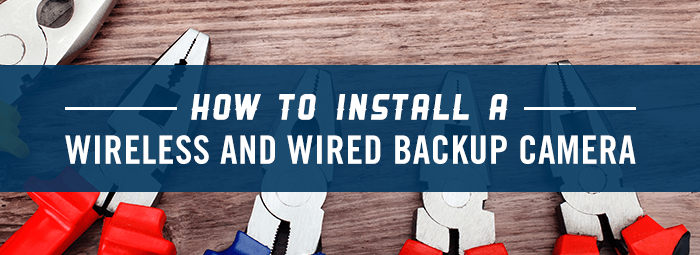Installing A Wired RV Backup Camera
Wired backup cameras provide a bright and stable picture, over the long haul, most consider them to be the better deal. An added bonus of wired cameras is that they don’t require their own power source, as wireless cameras do. But they do require a longer installation process than their wireless counterparts.
If you’re able to and comfortable with removing some interior panels of your RV to route wiring, installing a wired RV backup camera may be well worth the hassle. Here’s how it works.
Installation Instructions
First, understand that taking the time to plan a wired installation is critical. You’ll need a power drill, a ¾” drill bit, silicone sealant and an afternoon (about 2 to 4 hours should do).
Your most important decision will come in choosing where you’ll run the 60 foot cable. Be sure the wire won’t encounter any heat sources or pinch points along the way. The cable can travel along the roof or under your RV in split loom tubing. Depending on the design of your RV, it may be easier to run the wire beneath your flooring than around your roof rafters.

Mark the spot where you will mount your camera on the back of your RV and cut the appropriate sized hole. Be careful not to split the fiberglass with your ¾ inch hole. Mount your camera and apply the silicone sealant around the mount so it seals. Snake the cable through your hole and to the front of your RV. The journey to the front of your RV may require that you remove a kick-panel, a seat, or other equipment.

Mount the monitor in a convenient location that won’t block your line of sight while driving. Above the rear view mirror on the dash is the most common location. Attach the cable to the monitor and you’re ready to go!

(source: https://rv101.tv/2012/02/29/how-to-install-a-wireless-rv-back-up-camera/)
Installing a Wireless RV Backup Camera
Wireless cameras are available in two formats: digital and analog. Analog cameras are generally more affordable, but their signals aren’t as strong as digital cameras. Because they share frequencies with other analog devices, their signals can be interfered with, too. Digital wireless backup cameras are the premium option, as their picture quality is better, and signal interference is less common. Keep in mind that whether you have an analog or digital backup camera, you’ll need a power source, since they are not wired to the monitor.
Installation Instructions
You will need isopropyl alcohol, a clean rag, a cordless drill with screw bits, and silicone sealant for installation.

Connect your camera's power cable to the backup light circuit on your RV. Drill a hole if you need to (then use the sealant), or simply go through the license plate light hole. Remove one backup bulb and its socket. Attach the camera’s power cable to the colored backup circuit wire. The black lead from the camera should connect to the backup circuit’s black wire. Replace the socket and bulb.

Test, Test, Test
With any backup camera system, you want to test the connection and calibrate the setup. Fire up your rig, turn the monitor on and put the RV in reverse. Make sure the camera's settings and picture quality are to your liking. Depending on whether you're hauling something (i.e. a boat), you may want to orient the camera differently for better line of sight.
Installing a backup camera can be very simple as long as you’re prepared with the right tools, some very basic knowledge of wiring, and know-how as to how you plan to run wires through your RV. Follow our quick tips, or take to YouTube or RV forums for more tips. If you’re completely stuck, give us a ring! We’re happy to help.








